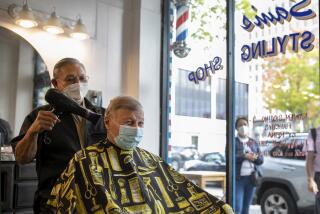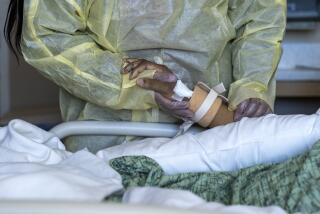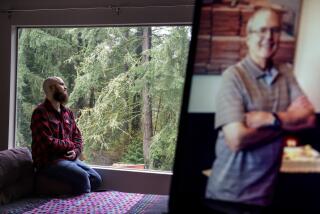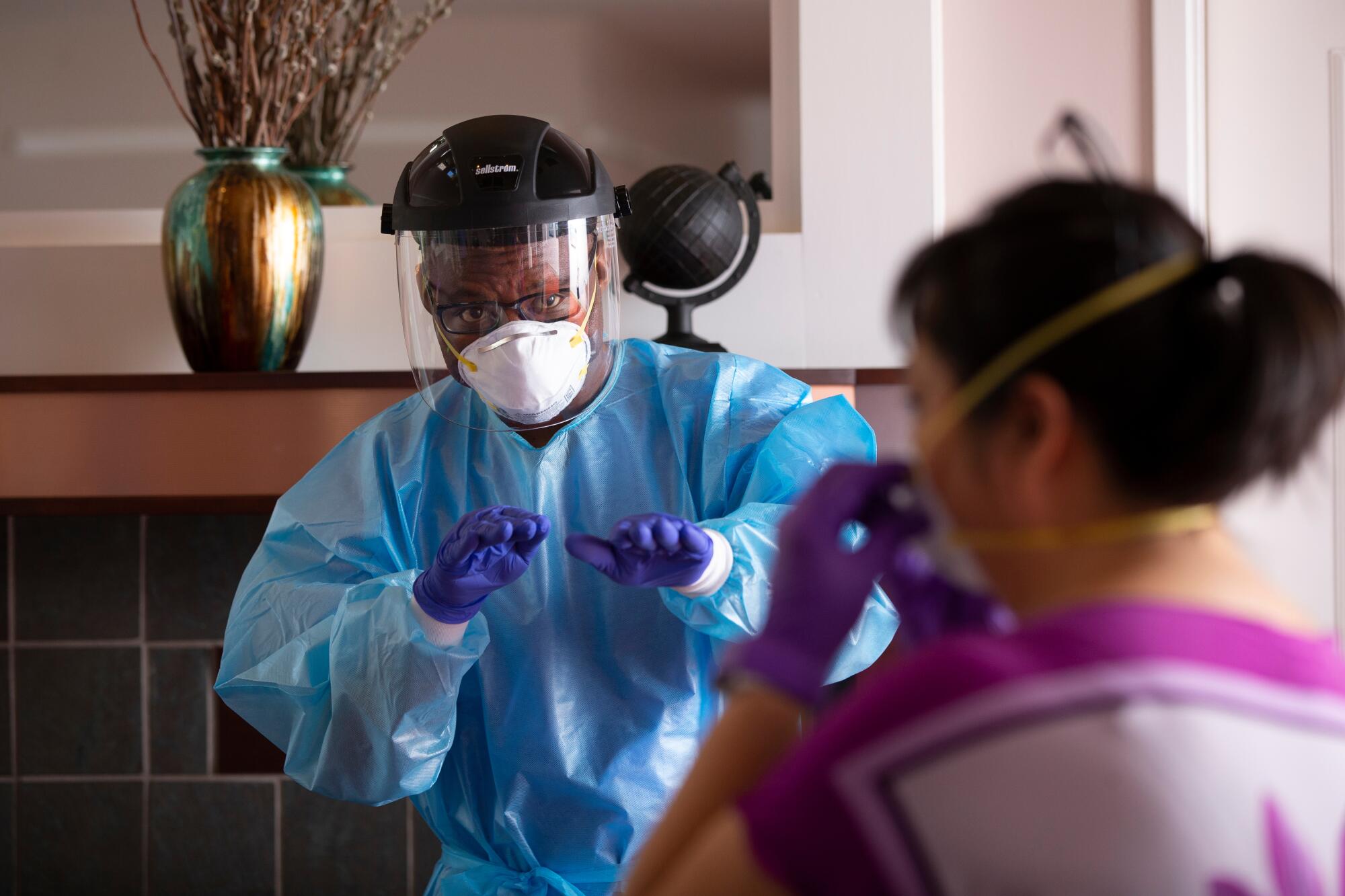
- Share via
Death fell hard across America this week.
More than 7,000 people died of COVID-19. Total U.S. infections of the coronavirus reached nearly half a million. It was the worst seven days the country has seen so far.
The news came as the world faced its own grim milestone Friday: more than 100,000 dead in an outbreak that has battered countless towns and cities. Even as the virus waned in China, its origin, it has surged across the planet.
America has become its greatest victim. From Boston to Honolulu, curfews were put into place. From Los Angeles to Miami, masks were no longer an option but the law. Good Friday services were canceled, intubated patients succumbed in hospital hallways, wooden boxes were lowered into mass graves.
This was America — a strange, new, scary place, where rage mixed with bewilderment, and bad numbers crept higher. More than 250 people died in California. Infections slowed in the epicenter of New York and the early-outbreak site of Seattle. But the deaths are still piling up, and cases are spiking among black communities in Detroit and New Orleans. So are they for Latinos in the Midwest and South.
For the doctors in packed hospitals — including one in New York who described what he was enduring as “mental terrorism” — and the nurses running out of protective suits who have watched the virus take their colleagues, the fight against the pandemic is far from over.
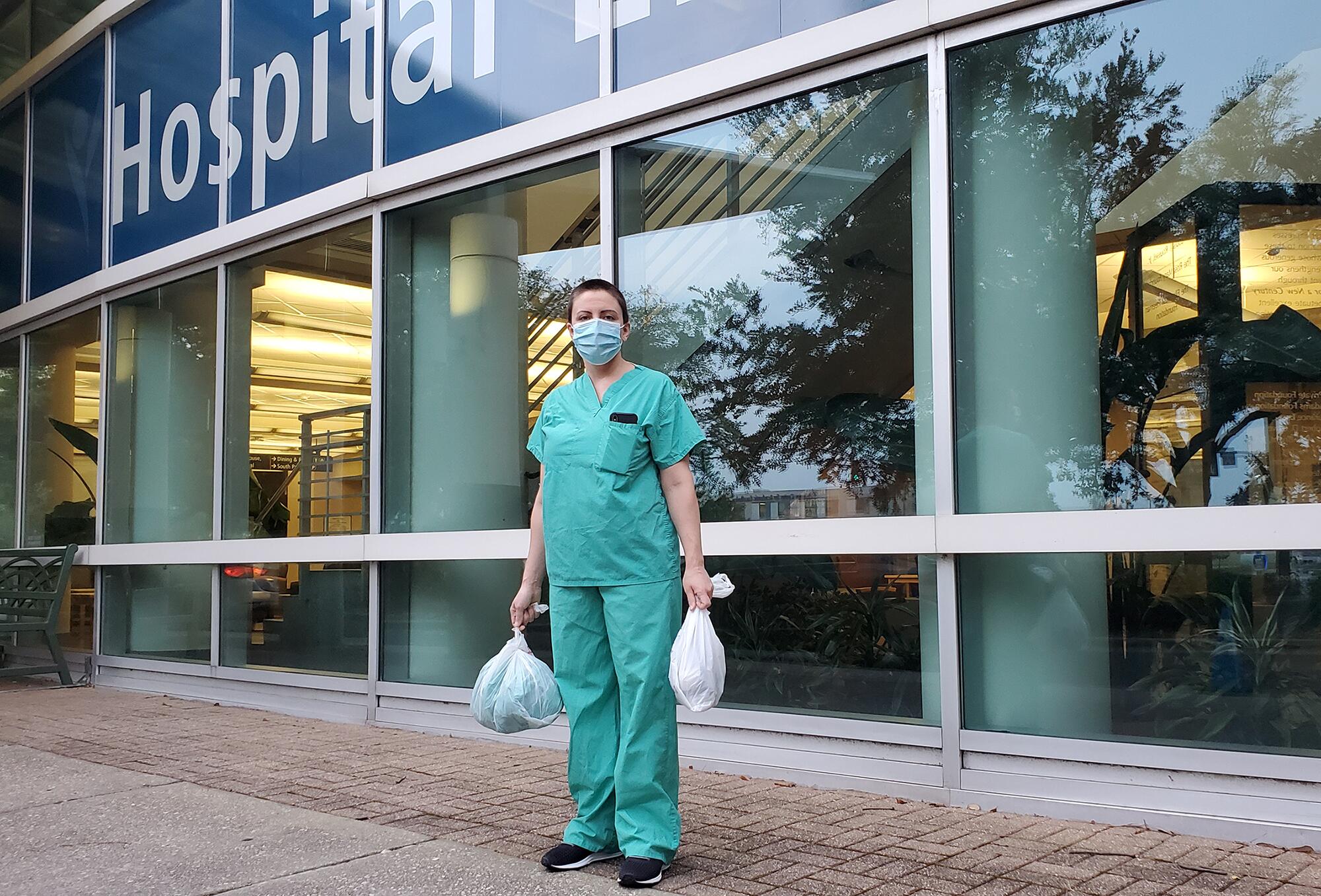
For the caretakers in nursing homes where the virus has killed scores of the elderly, and the chaplains who now tend to grieving EMTs, years of training aren’t preparation enough for the pain. It wasn’t war or 9/11, but it felt like it, an unfolding, pervasive disaster waged by an invisible enemy.
Parents, first told their children would be spared as the disease hit older generations, now bury their kids in anger and await funerals that may never come.
These are scenes from a ravaged America.
‘It’s unlike anything I have ever seen’
The man coded.
Laura Roark and her co-worker tried CPR. The man didn’t respond. He had come up from the ER just moments earlier. But he was gone.
Roark, a nurse for a decade, stood in her hazmat suit, face shield and mask in the ICU of a New Orleans hospital. There was more to do, though, a task no nurse wants.
The man’s family’s wasn’t around. Like him, they had COVID-19 and were quarantined at home.
Roark took an iPad into the room where the man lay. She held it up. On the other end, the man’s mother wailed when she saw her son’s dead body on the screen. He was 45. There were only seconds to mourn. The hospital was busy, other people needed to be saved. Or watched as they died.
Roark clicked off the iPad and went back to work. But she couldn’t stop hearing the cries.
“Hearing his mother’s wail when she saw him … that’s harder than doing CPR, “ Roark, 34, said.
In this hard-hit city in one of the hardest-hit states, Roark, who was working her second COVID-19 unit of the day, could do little else. Louisiana has reported about as many cases as California, a state with a population that’s 10 times bigger, and more deaths — 755 as of Friday.
These are some of the unusual new scenes across the Southland during the coronavirus outbreak.
“We have enough supplies for today and this week. But if this continues for another month, what is it going to look like then?” she said.
Roark floats between three hospitals straining to care for an influx of COVID-19 patients. By Thursday, the Ochsner Medical Center where she worked had expanded from three to five intensive care units, each with space for three dozen patients. Roark is worried about her patients. But she’s also trying not to get infected.
“Typically in an ICU, we’re in a patient’s room almost the entire day, constantly assessing,” she said. “Now we’re trying to be in there as little as possible.”
“It’s unlike anything I have ever seen in my nursing career.”
‘The communities that enter the fight the sickest and least-resourced are going to fall faster and harder’
Detroit reported 54 deaths on Friday, its highest from COVID-19 in a single day.
The death rate is worse than New York City.
The city has more deaths than all of Wisconsin, Ohio or Indiana.
Black people make up just 14% of Michiganders, but account for nearly 40% of the state’s deaths.
At Sinai-Grace Hospital, some patients now lay in converted hallways and waiting rooms, with tubes bringing ventilated air to them from occupied rooms.
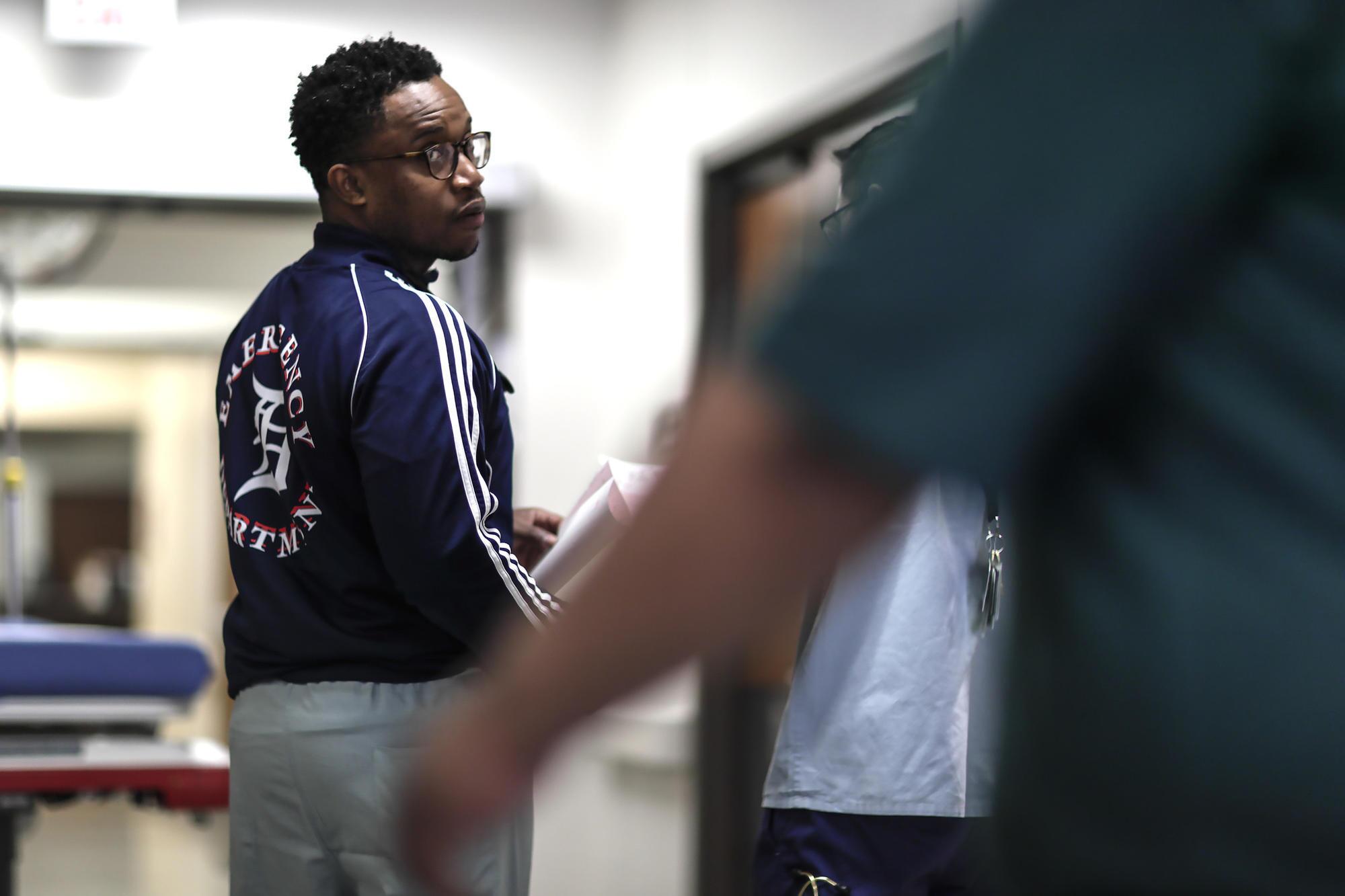
Almost every hour, Dr. Tolulope Sonuyi dials a family member, knowing they’re desperate for information.
Critical condition, he tells a panicked relative on the other line. May need a ventilator.
Heart and lungs have stopped working. Deceased.
Sonuyi assumes that every patient wheeled through the doors could have COVID-19. He estimated that at least 75% of his do.
“It’s the highest concentration of critical patients that most of us have ever seen,” said Sonuyi, who is in his ninth year as an ER doctor.
On the city heat map of COVID-19 cases, Sinai-Grace is marked in dark red.
In Michigan, there are 20,000 cases of COVID-19 and more than 1,200 deaths. Detroit has 9,600 cases and 450 deaths. During each 10-hour shift, Sonuyi watches as paramedics rush inside with patients struggling to breathe.
Almost all are black. Many are poor. With more than a dozen assisted living homes nearby, many are also elderly.
“It’s a devastating compound effect,” Sonuyi said. “The communities that enter the fight the sickest and least-resourced are going to fall faster and harder.”
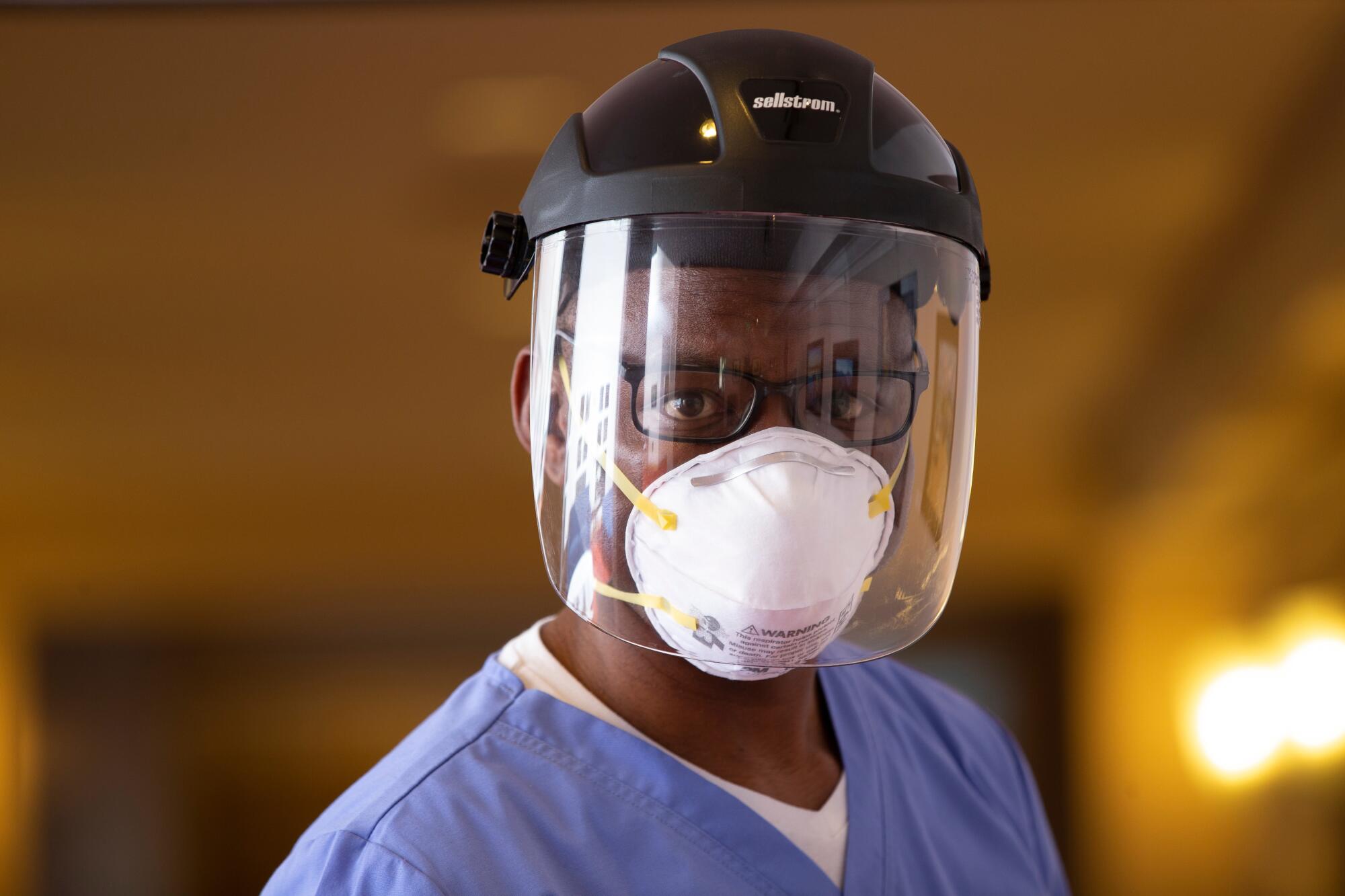
‘The elders among us deserve everything we have to give them’
Albert Munanga went to check on retirement home patients. He signed a logbook with a sterilized pen, which he placed in a cup with others to be disinfected. A healthcare worker took the 43-year-old’s temperature and asked questions to determine that he was free of symptoms.
The director of health and wellness at Era Living, which owns Ida Culver House Ravenna Senior Living Community, Munanga is worried. The road to recovery from the pandemic appears to be getting longer by day, even as experts say social distancing measures have more than halved the estimated death count in the U.S. from initial predictions of 200,000.
The virus is tearing through homes for the elderly in Washington state, where the U.S. epidemic first took root in January.
At least 163 long-term care facilities had reported infections over the last week, double the number from the week before. Deaths linked to the retirement communities have soared to 221 — more than half the state’s fatalities. In some nursing homes, the majority of residents are infected.
Still, the overall number of deaths has been declining in Washington state even as those in King County remain high, at an average of 11 a day in April until jumping to 19 reported Friday.
Munanga, a registered nurse, credits sanitation and screening, and quick testing of all residents and workers for the coronavirus, with containing an outbreak that imperiled the facility’s 80 residents.
On March 10, after a resident died of COVID-19 and another was hospitalized, healthcare workers converged on Ida Culver House. They found three more residents — all without symptoms — to be positive, along with two staff members.
Managers had already acted swiftly, ending group meals, isolating residents in their rooms, disinfecting common areas and banning visitors. A week later, the team returned and again tested all residents, obtaining one positive result for a person without symptoms.
The tests enabled managers to separate infected and healthy residents, both to prevent further spread and to conserve limited supplies of masks and gowns for use when tending to people with the virus. Since then, in a rare success documented in a study published by the Centers for Disease Control and Prevention, no more residents have tested positive.
“The elders among us deserve everything we have to give them,” Munanga said. “We should be diligently and passionately supporting them — until the very end, if we must.”
‘I’m tired. But this is not a sprint’
The Rev. Dr. Rachelle Zazzu put it plainly: she is in “the epicenter of the epicenter.”
She works as the only chaplain at Mt. Sinai Hospital in Queens, N.Y. A triage tent is erected outside.
Her job is to comfort the sick, the dying and the grieving, whether they’re religious or not.
That used to mean ministering bedside to patients or in waiting rooms to families.
Today, it means praying in hallways with doctors who are near tears.
“I can’t be there in person for the wife of a man who has been married for 60 years and is dying,” Zazzu said.
“But there are staff members with death in their sight every day.”
Zazzu arrives at the hospital every day at 5:45 a.m. to scan the logbook of who has been admitted to the 140 beds overnight. She huddles with staff as they go over the hours they face ahead.
Zazzu takes a few moments to offer spiritual support to the workers who will inevitably see death many times over.
“I remind them they are seen and known by God,” said Zazzu, 60, who was ordained in Los Angeles by the Movement of Spiritual Inner Awareness. “I remind them nobody is forsaken by God.
“God was letting people die 10 years ago and a month ago, and he’ll let people die tomorrow,” Zazzu said.
She spends most days walking through the corridors slowly, waiting for staff to approach her.
“They have concerns. They have fears. They have gratitude. They have blessings.”
For those dying of COVID-19, she can’t enter the room. So Zazzu has a new kind of memorial.
She’ll stand outside and place her hands on the door. “I’ll pray out loud for God to receive this person with mercy and grace.
“I’m tired,” she said during a recent shift. “But this is not a sprint.”‘Why should I be allowed to live and she has to die?’
It did not hit Melita Nichols until she stepped into her daughter’s small duplex apartment and saw her pajamas on her unmade bed and packs of Theraflu and Benadryl scattered on her headboard.
Like with so many families, closure escaped Nichols. Both she and her daughter, Qunia Roberts, were hospitalized in Albany, Ga., three weeks ago after being infected with COVID-19. But while Nichols, 48, recovered and left the hospital with an oxygen tank, Roberts, 27, died Monday.
Brand-new summer sandals, in shades of orange, yellow and gold, were stacked inside her daughter’s closet. Roberts had been excited just a few weeks ago to usher in spring with a pedicure.
“You don’t expect a young person to die,” she said as she slipped Roberts’ glossy wigs and long eyelashes into a trash bag and packed up her work laptop, crocodile and snakeskin purses and floral 2020 planner.
Nichols said her first-born had no medical conditions.
The young software implementation specialist for a healthcare IT consulting company was lighthearted, a free spirit who loved watching “The Golden Girls” and Maury Povich’s show.
Just a few days before she got sick, Roberts changed her Facebook profile to a shot of her spraying a can of Lysol.
The last thing Roberts said to her mother, over the phone when she arrived at the ER, was “Mama, I love you. We ain’t gonna let this corona kills us.”
She died in the evening.
In the last week, the death total jumped from 38 to 67 in Dougherty County, a predominantly black region in southwest Georgia that has been hit particularly hard by the pandemic. About 1 in 82 people in the county have tested positive for COVID-19.
After piling Roberts’ possessions into her daughter’s gray Hyundai Elantra — her lint roll and hoop earrings still in the driver‘s door, her frosty pink lip gloss and wet wipes in the console — Nichols spent Thursday afternoon trying to arrange a funeral.
“I question God,” she said through sobs. “I’m close to 50. Why should I be allowed to live and she has to die?”
Kaleem and Lee reported from Los Angeles, Hennessy-Fiske from New Orleans, Read from Seattle and Jarvie from Leesburg, Ga.
More to Read
Sign up for Essential California
The most important California stories and recommendations in your inbox every morning.
You may occasionally receive promotional content from the Los Angeles Times.

